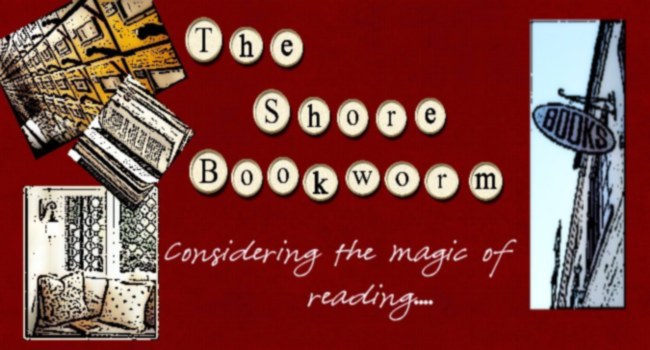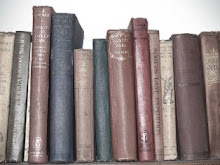In a recent post on her wonderful site, Idearella lists some of the reasons she prefers an actual book. Some of our thinking runs along the same lines. She has inspired me to create my own list of just why it matters so much to me that I hold a book rather than a machine. It is a short list, but it is passionate.
1) The Joy of Simply Holding a Book
My earliest happy memories…
It could have been a Little Golden Book of my own or one of my grandfather’s childhood books or a book at the library, but I can vividly remember the sheer thrill I got simply from holding a book in my hands. Beyond the promise of being carried away, for me there is a tactile symphony attached to every book.
 The Little Golden Books enthralled me with their bountiful illustrations, stretched across every page. I even memorized the tiny little drawings that decorated the back inside cover of each one. The gold colored foil on the spines cracked in the early days of reading, but gradually softened to open quietly. The pages eventually would not turn as sharply, the edges smoothed by hundreds of turnings. It became familiar, soft, comforting.
The Little Golden Books enthralled me with their bountiful illustrations, stretched across every page. I even memorized the tiny little drawings that decorated the back inside cover of each one. The gold colored foil on the spines cracked in the early days of reading, but gradually softened to open quietly. The pages eventually would not turn as sharply, the edges smoothed by hundreds of turnings. It became familiar, soft, comforting. The books at my grandparent’s apartment were a mixed bag, some from my grandfather’s turn of the century childhood, some from my aunts, but all hard covers, with scratchy cloth bindings. The illustrations were soft and dreamy, soft focused idealizations of the past. The books were well worn from much handling, but heavy, so I would usually prop them up with a pillow as I read.
There was nothing like new library books. Covered with clear plastic wrappings to protect the pristine new cover from grubby little fingers, these books crackled as you opened them and the crisp pages snapped past as you read. Set aside on a special table, it was always a thrill to see when the table had been replenished and a whole new set of possibilities awaited me. The books on the shelves were less impeccable, having been read more often, but finding one I hadn’t read yet was a special delight. Sliding it out of its spot, carrying it to the circulation desk, opening up the back to the card pocket, every step of the ritual involved touching the book. Each motion had its own feel, familiarity, promise.
2) The Human Connection
Every book itself tells a story…
Whether it has crossed several weeks or many years, every book is distinct in its journey to your hands, it bears its own marks. Before you even open the cover, a book tells a story of where it has been. You can see it and feel it. That is an integral part of the experience for me.
 A new book still intimidates me just a tiny bit, although there is definitely something special about being the first person ever to turn those pages. But it is the old books that I truly love. I have so many that I have picked up at second hand bookstores or book fairs. There is the unique scent of aging paper, marks along the way on the covers and the pages that give little clues about who was there before you. Technically, for value, we are never supposed to write in a book. But I am always so touched to find a loving inscription or a firmly possessive name written on the inside cover.
A new book still intimidates me just a tiny bit, although there is definitely something special about being the first person ever to turn those pages. But it is the old books that I truly love. I have so many that I have picked up at second hand bookstores or book fairs. There is the unique scent of aging paper, marks along the way on the covers and the pages that give little clues about who was there before you. Technically, for value, we are never supposed to write in a book. But I am always so touched to find a loving inscription or a firmly possessive name written on the inside cover.I like to wonder what they thought of the book. Did they enjoy the story, the writing? What about the characters? Did they seem plausible to my long-ago reader? A well worn book gives you the answer when it has obviously been read time and time again. And how has it happened that this once dearly loved possession has slipped away? That answer is part of the circle of life.
I am honored to own books that were once loved by other bookworms, it is a connection that spans decades in some cases and reflects history. I imagine the days surrounding their reading. Someone reading Mrs. Miniver in 1940 didn’t know how the War was going to end. I have a copy of a 1914 English history book full of rude, hilarious cartoons drawn in the margins by bored schoolboys almost 100 years ago. One of my favorite books is a 1935 guide to New York City. When I read it I imagine my beloved grandparents going through their normal routines in that same city in the same year while a tourist would be using the guide to explore places that were so ordinary to them. It is the closest thing we have to time travel.
People belonged to, and loved, these books.
3) Books are Beautiful in Themselves
They are just so pretty…
Millions of dollars are devoted to marketing books. Every detail, the artwork, the wording on the cover, the colors chosen, the font used, are meticulously decided based on aesthetics, with the primary focus being to make that book attractive to you.
 Book covers that are illustrated with old photographs or impressionist style artwork always catch my eye and I will gravitate to that book to see if it will interest me further. I have noticed lately a trend toward very decorative covers, a throwback to Victorian days when even the page edges were decorated, either in gold leaf or with a deckled pattern.
Book covers that are illustrated with old photographs or impressionist style artwork always catch my eye and I will gravitate to that book to see if it will interest me further. I have noticed lately a trend toward very decorative covers, a throwback to Victorian days when even the page edges were decorated, either in gold leaf or with a deckled pattern.The variety of colors and illustrations and print that go into every book is another reason to celebrate simply having an actual book in front of you.
4) Your Books Make a Statement About Who You Are
You are your books…
Anyone walking into my house has no doubt that I am a book lover. I have book shelves or piles of books in every room. They are part of the furniture, literally, and it makes me happy just seeing all those books.
Looking at the titles will tell a further story about me. Most of my books are by English authors. There are many, many mysteries. There are a lot of biographies of people that I admire because they have overcome some adversity or because they are just interesting. You’ll find history books, many about London and New York City, two of my favorite places on earth. I actually collect vintage guide books to both cities, books that tell stories of places that my relatives may have routinely visited, but do not exist anymore except in these pages.
At least half of my books are over 50 years old, but only have value to me. I have original (not first edition), vintage copies of Gone with the Wind, Random Harvest, The Grapes of Wrath, Rebecca, all those magnificent stories of the 1930’s that were made into iconic films.
You will find I like to cook, to bake especially, by seeing my collection of cook books. Before I found out I had MS, my daughter and I had planned to open our own business, a tea room. I still have the dozens of books I referred to in planning our dream. There is a whole shelf of well worn parenting books. And I have an entire collection of all the books I loved most as a child.
From room to room my books tell the story of my life, my interests, my passions. Each book is precious to me as an individual.
A story is a story and it is told through the words. I get that about e-readers. But books are stories within stories within stories, a bonus that could never be replicated by an electronic device sliding the words on a screen in front of me.
 |
| Interior of Shakespeare & Co., Paris |

Did you like this post? Let others know!








































